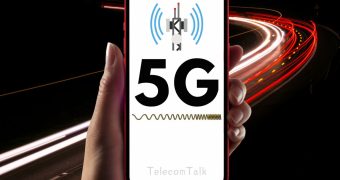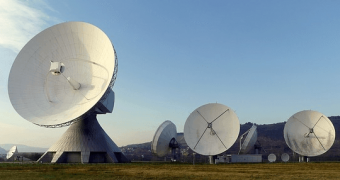
The Union Minister for Communications, Jyotiraditya M. Scindia, announced that India will begin testing 5G use cases in rural areas before extending them to urban centres. Speaking on World WiFi Day at a conference held in New Delhi, organised by the Broadband India Forum (BIF) on June 24, the Minister said the pilot will be rolled out in 13 villages across multiple states, marking a deliberate move to demonstrate the transformative potential of 5G technology in rural India.
Also Read: 5G Is the Beginning of an Infinite Sky of Opportunities: Exploring the Use Cases
Rural First: 5G Use Case Pilot in Villages

"We are starting on 5G use cases — We're not starting in cities. Not in Bombay, not in Delhi, not in Bengaluru, not in Hyderabad. We are starting with 5G use cases in 13 villages — from Andhra Pradesh to Madhya Pradesh — across the country. To prove the 5G use case model: ten services, thirteen villages," the Minister said, adding that the initiative aligns with Mahatma Gandhi's vision that India will rise from its villages.
"I want to put this to rest: our penetration, even on Wi-Fi, has to be countrywide. It has to be wide — and it has to be deep."
The event, which was supported by the Ministry of Communications, Department of Telecommunications (DoT), MeiTY, C-DOT, Wi-Fi Alliance, and Wireless Broadband Alliance, also saw support from technology companies such as Meta, Qualcomm, HP Enterprise, Amazon, and others.
Also Read: Bharat Offers One of the Cheapest Mobile Data Rates Globally: DoT
Cheap Data in India
At the event, the Union Minister for Communications highlighted India's rapid strides in digital connectivity, asserting that the country has emerged as a global leader in affordable internet access, indigenous telecom technology, and digital innovation.
Speaking at the event, the Minister underscored India's sharp decline in data and call costs over the past decade. "Ten years ago, we were charged Rs 5 per minute. Today, we are charged Rs 0.03 per minute. I can't even convert that into cents! And data — one GB of data used to cost Rs 287 per GB. Today, it costs Rs 9 per GB, which is about 11 cents. And what is the world's average cost per GB? You'll be shocked — USD 2.49. So, India operates at 5 percent of the world's cost. This is the democratisation of technology," the Minister noted.
From Fibre to Satellite
"Today, we have fibre, we have broadband, we have Wi-Fi, we have mobile — and soon enough, we will also have satellite. Our job is to provide as many avenues as possible — and within each vertical, provide intense competition. It's not good enough having a duopoly, or just one or two carriers. You must have competition in every sector. India today is probably the only country in the world with four telcos — and incessant competition among ISPs," Scindia added.
Also Read: India Leading the Way in Affordable Internet Access: DoT
Fastest 5G Rollout
Highlighting infrastructure milestones, the Minister pointed out that India rolled out 5G across the country in just 22 months, with over 5.5 lakh base stations deployed and Rs 5 lakh crore invested, covering 99.6 percent of districts and 82 percent of the population. "This scale and speed are unmatched globally," he said.
"It is only in India that we've rolled out 5G in just 22 months — with close to five and a half lakh BTSs, Rs 5 lakh crore worth of investment, covering 99.6 percent of districts and 82 percent of the population.
"It's only possible in India. It's only possible in India because of the Prime Minister's resolve — in a world where four countries have a monopoly in terms of telco equipment for 4G: China, Finland, Sweden, and Korea — five companies in four countries.
Also Read: Monetising 4G and 5G: Key Takeaways to Date and What’s Next?
Indigenous 4G Stack
"Today, a public sector company like C-DOT combines with a private sector company like Tejas, and an Indian systems integrator (SI) like TCS — and we produce our own 4G stack, becoming only the fifth country in the world to have telecom technology.
"So for us, literally, it's not just a euphemism. It's not a cliche. The sky is the limit — from Wi-Fi to satellite. And India today has become the leader, ladies and gentlemen. You are responsible — and you must be saluted for that. We have become leaders of the digital world, across the globe.
"Today, you'll be amazed: 46 percent of all digital transactions in the world happen in India. Forty-six percent — in one country. Not the USA, not all of Europe. Not China. 46 percent — in India," the Minister added.
Also Read: Govt Looking to Address Return on 5G Investments; People Consuming Data for Entertainment
Empowering Grassroots Innovation Through Wi-Fi
He emphasised that India's Wi-Fi penetration must be deep and nationwide. The Minister also shared new models for Wi-Fi-driven entrepreneurship, citing examples such as a shopkeeper in Varanasi turning a Rs 3,000 router into a Wi-Fi hotspot for local students and gig workers, an app developer in Pune building a tool to locate Wi-Fi access points, and a mall owner in Guwahati becoming a public data office aggregator.
"And this is India's example of grassroots connectivity — a connectivity which is steeped in simplicity, a connectivity which is driven by inclusion, and a connectivity that is blessed by innovation," he said.
According to the Minister, the push also includes satellite-based internet through LEO and MEO technologies, with spectrum assigned administratively and three licenses already granted.
"Satellite, LEO, and MIO both have become a reality in India today. Spectrum will be assigned on an administrative basis. Three licenses have been given out, and those areas that were never connected will now become connected in India."
Cheap Devices
Finally, the Minister appealed to device manufacturers, OEMs, and chipmakers to keep hardware affordable.
"The first is access. The second point is affordability. And here, I must appeal to my industry—my chipmakers, my OEMs, my device makers. We must ensure that we are able to produce devices at nominal cost to allow our citizens to connect to this technology. We cannot allow devices to become the new digital divide in our country.
"Therefore, if you look at the three components of this space—Number one: terrestrial fibre. Number two: satellite connectivity. Number three: devices at nominal cost.
Also Read: We Are Today the Cheapest Data Market in the World, Says Communications Minister
Connectivity is a Tool of Empowerment
"All three together represent the bouquet that present the opportunity for our countrymen and women the opportunity to power forward and innovate in their lives. And that is the mandate of the Telecom Ministry —to ensure we provide that landscape for every single citizen across our country.
"A final word I'd like to say: In India, I certainly believe that connectivity is not a commodity. It is a tool of empowerment. It is an act of nation-building. And therefore, on this World WiFi Day, let us commit ourselves: that we will light up every single rural home. We will empower every aspiring mind, and we will strengthen every public service with the power of Wi-Fi. Together, let us make Wi-Fi stand for Widespread Inclusion for Future India," he concluded.
Also Read: India Leads 5G Growth with FWA Expansion and Global Data Usage Record: Ericsson Mobility Report
Towards 50 Million Public Wi-Fi Hotspots
"With over 90 percent of broadband usage in India occurring over Wi-Fi networks, the recent delicensing of the 6 GHz band is expected to unlock a new era of next-generation Wi-Fi (6E and beyond) — leading to faster and more reliable home Wi-Fi, enhanced digital connectivity for in-building coverage, and opportunities for innovation in the area of Private Networks in industries like smart cities and smart factories as also for public and community Wi-Fi solutions. Our goal of achieving 50 million public Wi-Fi hotspots by 2030 makes this conference a critical platform to reflect on the progress, share international best practices, and reaffirm Wi-Fi's role as a pillar of inclusive digital development," BIF said in a statement.
You can also join the TelecomTalk WhatsApp Community, TelecomTalk WhatsApp Channel or Telegram group Telecom Circle for updates and discussions.















